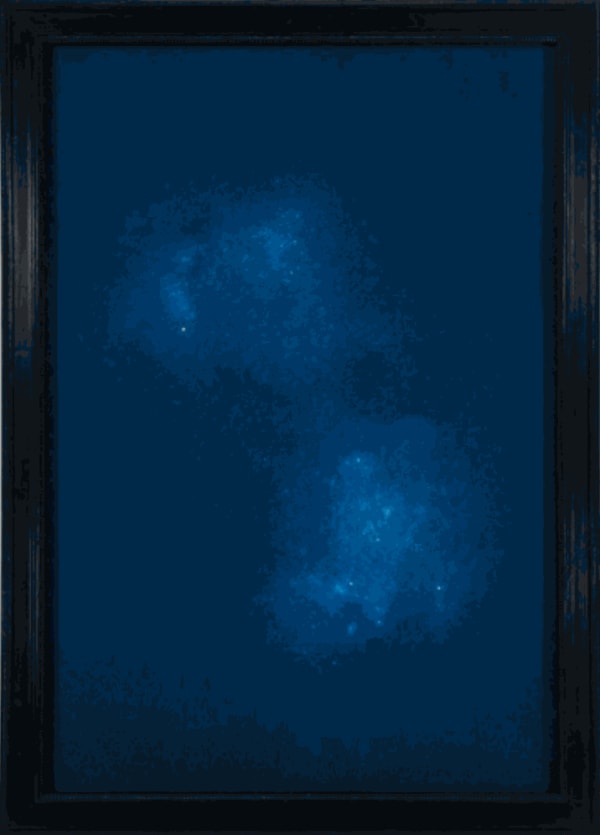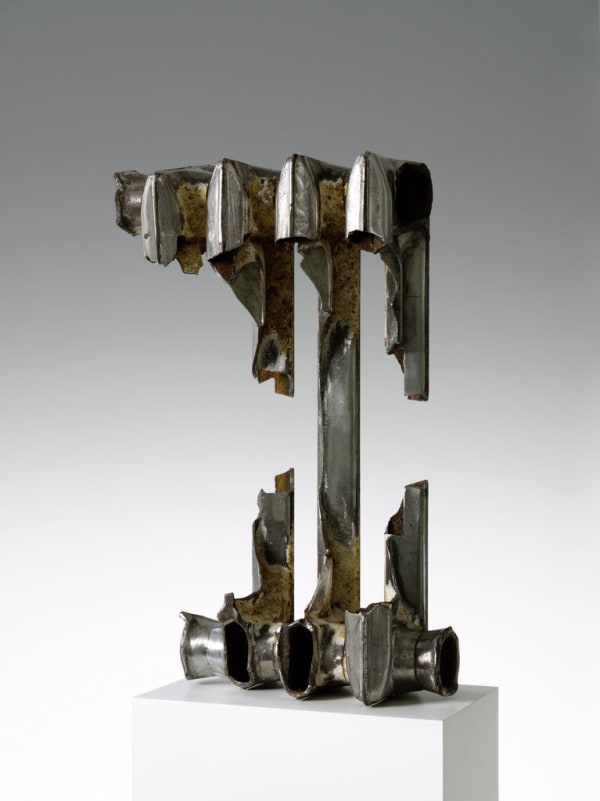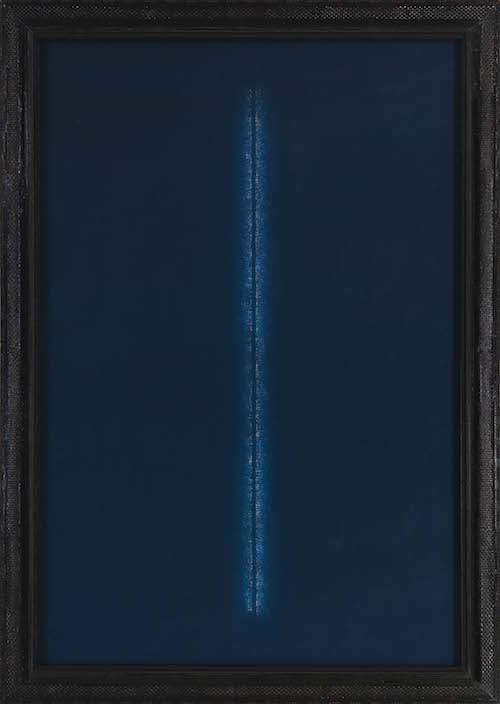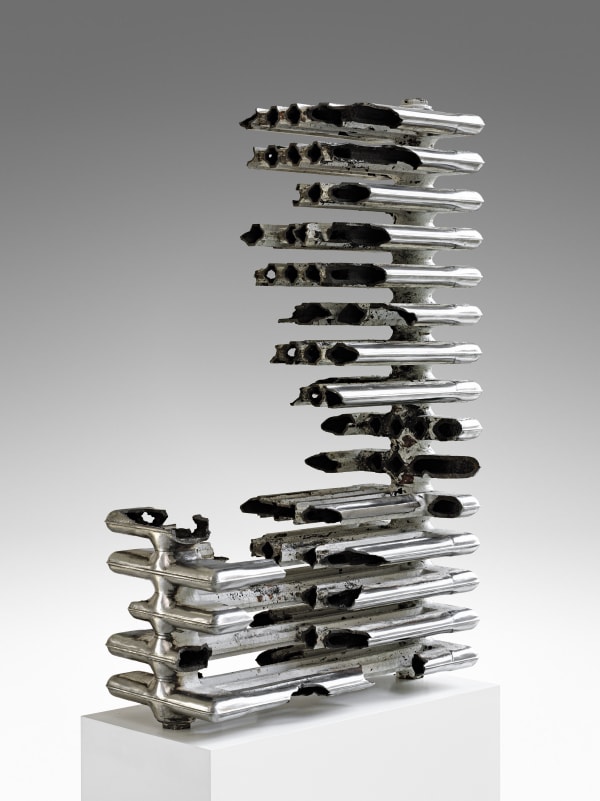Max Frisinger: Goddess of Industry
Gallery Baton is pleased to present Max Frisinger’s solo exhibition Goddess of Industry from 27th January to 4th March.
Max Frisinger, a German artist born in Bremen, has been internationally recognized through his sculptures and installations that stem from sincere observation of ordinary objects. With Europe as his centre, he has exhibited at numerous museums and galleries. Also, his works are collections of major worldwide institutions such as Schaulager Basel (Switzerland), Saatchi London (England), The Speyer Family Collection (USA) and The Margulies Collection (USA).
In this solo show, the artist reveals multiple sculptures whose basic structures are cast iron radiators collected by him and two dimensional works combining industrial materials and LED (Light Emitting Diode). The artist previously has focused on medium-large sized site specific installations, whereas it is notable that the radiator series actively applies characteristics of standing sculptures by adjusting their sense of volume, at the same time emphasizing their material properties.
In the context of art history, Readymade art and artworks utilizing found objects employ actual objects or products as their component parts with a minimum or none modification on them. Yet, Max Frisinger goes further than that; he treats the collected objects like a general art medium such as marble and takes them for his starting point of creation. He seems to be fascinated by a rigorous aesthetic, a moderate repetition of volume and sense of weight contained in old-fashioned cast iron radiators. As though a sculptor transforms rough marble into a certain form that he intends to produce, Frisinger tries to maintain the radiators’ figurative features and also to revive the inherent beauty existing in industrial products which already have lost their functional worth.
The outcome, specified in a shape of a sculpture through the process, possesses ambivalent factors: Glitter and rust, formation and extinction, and whole and parts. It eventually asks us profound questions about the value of objects, the aesthetic permanence consequent upon the value and the visual manifestation of mechanical savour.
As the presented two dimensional works secretly expose, Frisinger constantly attempts to demonstrate that aesthetic aspects of everyday objects can exist regardless of their functional lifespan and new value can be generated and extended by artist’s intervention. Especially, these objects which terminate at the stage where artists are not able to revivify, paradoxically are given their individuality and are reborn as subjects of appreciation through the artist’s involvement. Consequently, it opens up a serious discourse on the boundary of art and ordinary and its expendability.












